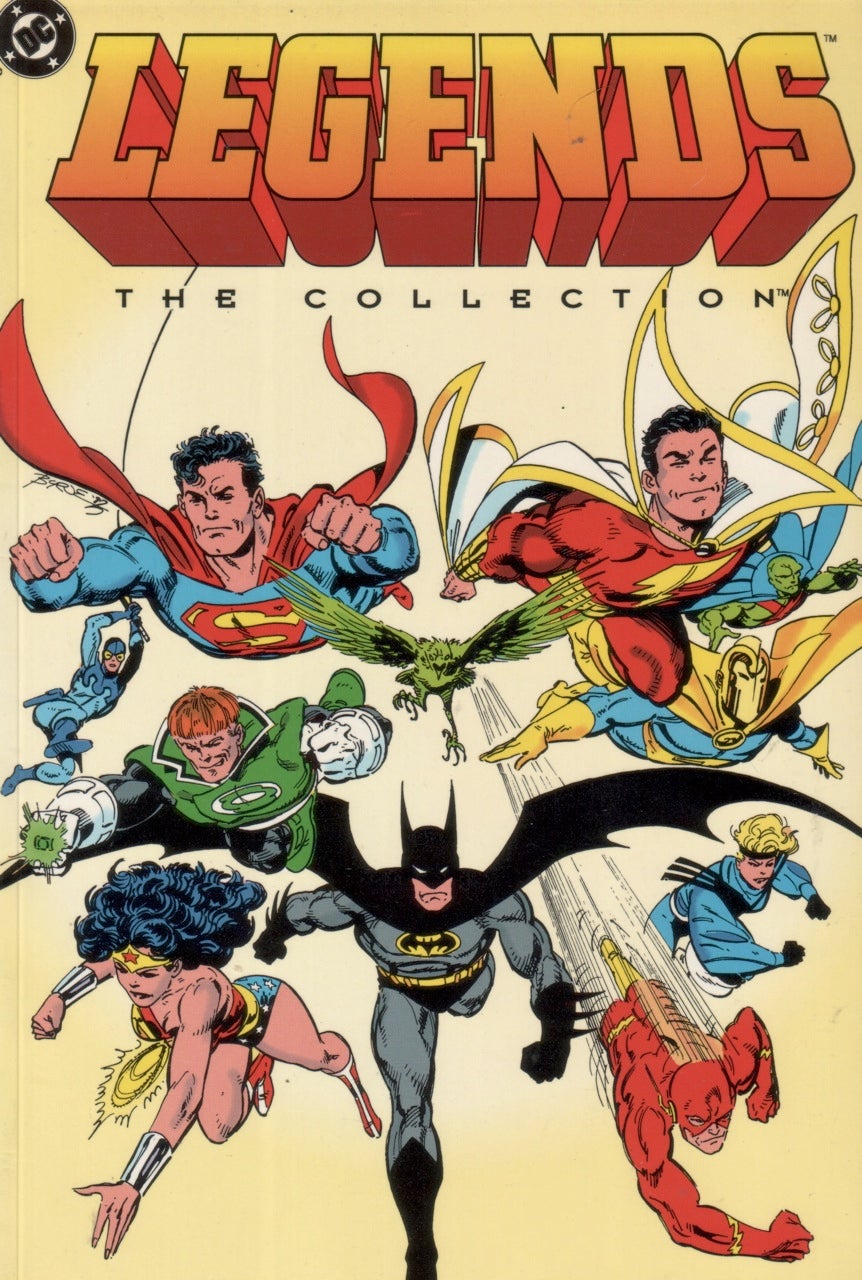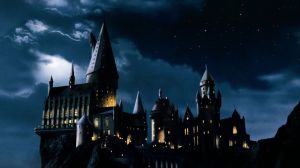
Between Future’s End and the recently launched miniseries, Multiversity, by Grant Morrison, it has been an event-full time in the DC Universe lately (and that’s not even counting the weekly Earth-2 series announced for November).
Videos by ComicBook.com
DC gets credit for kick-starting the era of event comics with its landmark 1985 miniseries Crisis on the Infinite Earths. As one of the first crossovers in comic book industry history, Crisis launched a DC tradition of annual events (which has since grown to multiple events every year) consisting of both a dedicated miniseries and other books that connected to a larger story.
In acknowledgement of DC’s high-profile September, this list ranks the 10 greatest events in company history. Please note that for purposes of this list, only company-wide events that featured tie-ins across multiple books (and a separate miniseries) were considered – so please forgive the lack of such stories as “The Death of Superman,” “Night of the Owls” and “Sinestro Corps War.”

10. Identity Crisis
One of the most divisive comic books to be published over the past 20 years, people either love or loathe Brad Meltzer, Rags Morales and Michael Bair’s 2004 miniseries, Identity Crisis. Because of all of the passionate responses this series elicits from fans, it sometimes difficult to approach Identity Crisis with an objective and open mind. But those that manage to block out the noise will find a fairly engaging, but flawed series that’s easy for even casual fans to pick up and read.
There are valid criticisms surrounding the circumstances (and resolution) of Sue Dibny’s murder, and there is certainly an uncomfortable amount of mind-wiping going on, but the series is also chock full of emotionally gripping sequences and fun comic book moments. The opening chapter that features Ralph Dibny, the Elongated Man, talking so lovingly about his wife only for it to dovetail with her murder (and funeral) is absolutely gut-wrenching. And watching the Justice League fight a master tactician like Deathstroke is just good old-fashioned fist-pumping comic book action.

9. Infinite Crisis
Unless its Empire Strikes Back or Godfather II, sequels rarely live up to the expectations set by their predecessors, and that’s certainly the case with 2005-06’s Infinite Crisis, a follow-up to 1985’s landmark Crisis on the Infinite Earths. But Geoff Johns and an assortment of illustrators, including Phil Jiminez, George Perez, Ivan Reis and Jerry Ordway, still produced a crossover event that’s packed with ambition and fun, even if it pales in comparison to the original.
Infinite Crisis gives fans of the original Crisis plenty to latch on to in how it immediately brings back some of the key Earth-2 characters from the 80s, like Alexander Luthor and Earth-2 Superman and Lois Lane. In terms of consequences, the series features a well-executed heel turn courtesy of Superboy Prime, and like the original Crisis, it features a high bodycount, including the death of the Earth-1 Superboy.

8. Cosmic Odyssey
This four-part prestige format 1988-89 miniseries features Jim Starlin on scripts and Mike Mignola on pencils, and focuses on another attempt by Darkseid to gain the Anti-Life Equation. Most of DC’s flagship heroes are paired off with members of the New Gods and in a twist, all are tasked with actually supporting Darkseid’s goals in an effort to protect the universe from a greater evil.
In terms of Cosmic Odyssey’s legacy, a third volume of New Gods spun out of the miniseries. But evebt is probably best remembered for the emotional journey of Green Lantern John Stewart. In the mini’s second chapter, Stewart’s arrogance and hubris leads directly to an entire planet being destroyed and in the final issue, Stewart is so overcome with guilt he contemplates suicide.
The Green Lantern subplot alone is worth the price of admission. Beyond that, Cosmic Odyssey is a fun, action-filled DCU/New Gods vs. cosmic forces of evil story that should please fans of these characters.

7. Final Crisis
Another event that fans either loved or hated, 2008-09’s Final Crisis, which was written by Grant Morrison, has both been praised as a mind-blowingly unique comic book crossover and derided as a bunch of unreadable gobbedlygook. For the purposes of this list, let’s split the difference and celebrate what it does right while also acknowledging that those readers who don’t view the world of comic books through Morrison’s one-of-a-kind prism might have a difficult time catching all of the references and minutia buried throughout the seven-part miniseries and its numerous tie-ins.
The event focuses on Darkseid, who after tumbling through time, lands on Earth and begins to destroy the Multiverse. But Final Crisis is probably best known for its showdown between Batman and Darkseid which ends with the presumed death of the Dark Knight. The event also features one of the most wild endings you’ll find in comics, when dozens of Supermen from across the Multiverse – including one that is based off of U.S. President Barack Obama – come together to save the universe.

6. Flashpoint
DC’s last major event before its New 52 reshuffling of the deck in 2011, Flashpoint is a fun throwback to the days of the company’s Imaginary Stories. Flashpoint, which consists of a number of tie-ins and a five-part miniseries by Geoff Johns, with art by Andy Kubert, opens with Barry Allen/Flash waking up in a universe where everything is dramatically different. Bruce Wayne is dead and his father Thomas is operating as Batman; the Teen Titan Cyborg was the universe’s chief hero; and Superman was being help in captivity by the government. Allen eventually learns that this alternative world was created by his nemesis, Professor Zoom (the Reverse-Flash).
Flashpoint’s mystery elements keep the narrative moving quickly, as Zoom’s chicanery is eventually discovered and exposed. The story also manages to hit a number of emotional beats, including a real heartwarming interaction between Barry and Bruce at the very end.
On a larger scale, DC used Flashpoint to build its New 52 concept by showing the Flash using his speed to unite the DC, Vertigo and WildStorm “timelines” under one banner. This creates a new “stronger” DC Universe.

5. DC One Million
This inventively fun crossover event features a four-part miniseries by Grant Morrison and Val Semeiks, along with a ton of tie-in issues. Born out of Morrison’s revered run on JLA, DC One Million brings together the 20th-century Justice League with their counterparts from the 853rd century, the Justice Legion Alpha. The 853rd century was picked as a point in the future by Morrison because if DC maintained a regular printing schedule, its Action Comics series was would have published its one millionth issue sometime between 85201 and 85300 AD (just forget about the New 52 reboot – they apparently didn’t see that happening in the future).
While DC One Million does feature some of Morrison’s trademark cosmic high-mindedness, it’s also filled with moments of joyful superheroics, including a very memorable showdown between the present/future heroes and the chief antagonist, Solaris. Morrison would go on to use prominent elements from the event in his celebrated All-Star Superman limited series, while DC would continue to make references to One Million 10 years after it released a Booster Gold #1,000,000 issue.

4. Legends
As the first major DC crossover in its post-Crisis on the Infinite Earths universe, Legends, by John Ostrander and Len Wein, with pencils by John Byrne, is certainly not as high-minded and abstract as its predecessor, but it might be more fun.
Legends was published within a six-issue miniseries and various other tie-ins. The plot centers around Darkseid, who makes a bet with the Phantom Stranger that he can turn humanity against Earth’s superheroes. The crossover marks a number of landmark events for the DC Universe, including the modern-era integration of Captain Marvel/Shazam into the DCU, and the introduction of the Suicide Squad (who battle Darkseid’s fire beast Brimstone).
The series also leads directly into a new Justice League team – which consists of Batman and a bunch of “B” listers as famously captured during the hilariously epic J.M. DeMatteis/Keith Giffen run on the title.

3. Blackest Night
This 2009-10 miniseries written by Geoff Johns with pencils by Ivan Reis was a precursor of sorts to very disappointing Green Lantern film in 2011. Fortunately in terms of comics, Blackest Night was one of the finest crossovers the company has put together over the past decade, and will likely stand the test of time as one of its greatest events ever.
The series focuses primarily on Hal Jordan/Green Lantern and Barry Allen/Flash, two characters who at the time had been recently resurrected and re-integrated in the DC Universe by Johns in the Green Lantern: Rebirth and Flash: Rebirth stories. Alongside a number of other DC heroes, the duo fight a mystical force named Nekron who is resurrecting deceased superheroes like Aquaman, and Elongated Man to destroy all life and emotion from the planet.
Johns has said after the fact that a central theme of his story is “emotion,” and that certainly shines through as all of the living heroes are faced with combating monstrous versions of their deceased brethren, while Allen and Jordan themselves must contemplate their own mortality given their own returns from the dead. Johns also manages to end the story in a hopeful spot as Aquaman is brought back to life and reunited with Mera, while the group learns that Batman – thought dead at the end of Final Crisis – is actually alive and out there somewhere.

2. 52
A massive achievement that brought together the creative heft of Geoff Johns, Greg Rucka, Grant Morrison and Mark Waid (with layouts by Keith Giffen), 52 captures one year in the DC Universe without the holy trinity Batman, Wonder Woman and Superman. While the series is best known for its incredibly ambitious, one-issue-per-week format, beyond its schedule, 52 is a phenomenally engaging read that presents some wonderful stories about various members of the DCU “B” list like Ralph Dibny, Black Adam, Booster Gold, John Henry Irons and Renee Montoya.
All of the narratives integrate seamlessly, moving from story to story with the efficiency of well-executed episodic television. Plus there are a ton of surprises packed into the story that help keep the pages turning, including the full-blown resurrection of DC’s Multiverse, a new Batwoman and some gory sequences involving the Black Marvel family.

1. Crisis on the Infinite Earths
DC’s first ever major crossover event remains its best, even after 30 years. Marv Wolfman and George Perez manage to pack a ton of characters into these series, but still craft a story that is appropriately dramatic and epic in scope (in contrast Marvel’s Secret Wars, which, for as much fun as it was, was just one big battle that lasted over 12 issues). The stakes are incredibly high in Crisis – how else would you describe the destruction of the Multiverse – and the major deaths in the story (Supergirl, Barry Allen) hit all the right emotional beats, creating iconic moments in comic book history. Plus, Perez’s artwork is pretty untouchable throughout.
The series is not without its flaws. The forward thrust of the narrative seemingly loses steam after the Flash’s great sacrifice destroys the Anti-Monitor’s anti-canon. And despite the fact that Wolfman and Perez’s stated mission for the series was to streamline DC’s convoluted continuity, Crisis made a bigger mess for certain characters and series.
Still, its influence on the industry cannot be denied. There’s a reason why the story continues to be referenced and lauded all these years later.








